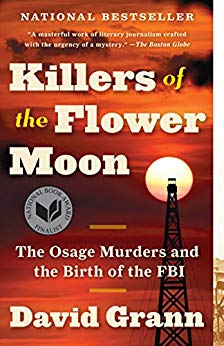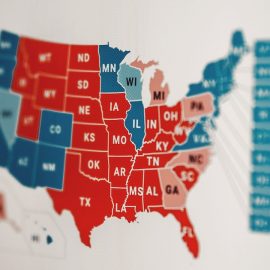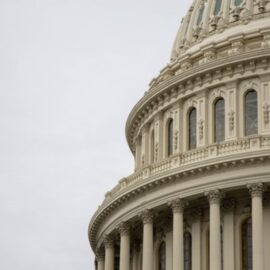

This article is an excerpt from the Shortform summary of "Killers of the Flower Moon" by David Grann. Shortform has the world's best summaries of books you should be reading.
Like this article? Sign up for a free trial here .
What were the Osage oil murders? How are they an example of Native American discrimination?
The Osage oil murders were a series of murders in the 1920s. The murders took place against the Osage Native American population and were orchestrated to steal the wealth from the Osage that the white residents of Osage, Oklahoma, perceived as unfair.
Keep reading to understand the discrimination against Native Americans that led to legal systems and cultural norms that allowed these murders to take place.
Native American Discrimination & the Osage Murders
To understand how Native American discrimination ultimately led to murder, let’s first look at the wealth of the Osage, discrimination in the legal system, and forced cultural assimilation.
The Wealth of the Osage
In the late 19th century, the Osage Nation, a Native American tribe of the Great Plains, unexpectedly became one of the wealthiest per-capita groups in the world. Military incursions by the U.S. Army and land expropriation by white settlers over the course of the century had confined the Osage people to a reservation in a small corner of northern Oklahoma, a sliver of their once-extensive tribal territory.
The forced migration brought poverty, sickness, and misery—by the 1870s, the population of the tribe was a mere 3,000, just a third of what it had been at the dawn of the 19th century, with many people succumbing to smallpox and violent attacks by white settlers. But when oil was discovered in Osage County, Oklahoma in 1897, the Osage were suddenly rich beyond their wildest dreams, with the total tribal income from oil leases running into the tens of millions.
What had once been a forgotten corner of the Great Plains overnight became a focal point of the American economy. Every three months when new Osage leases became available for auction, the major oil trusts of the day flocked to the county to bid, often bribing officials of the U.S. Department of the Interior to claim the most promising leases. Leases on individual tracts could climb as high as $2 million. At one auction, the oil companies bid a collective $14 million. In 1923 alone, the Osage drew an income of more than $30 million (more than $400 million in inflation-adjusted figures). Owners of the mineral rights to the oil that lay beneath their lands, the Osage gained unimaginable wealth from these bidding wars.
The tribal leadership instituted a headright system, under which each member of the Osage Nation was entitled to annual royalties from the oil production. Although individuals could sell their surface land, there was no right to buy or sell headrights. This ensured tribal control of the oil wealth.
Each member was allotted an equal share, providing a steady and lucrative income. Not all Osage were happy about the new wealth, however. Many, particularly the elders, believed that the influx of oil money would lead to the erasure of the traditional Osage way of life, creating a moral and spiritual void that could never be filled by material wealth. When the checks stopped coming, these elders warned, the Osage would be left with nothing. Native American discrimination accelerated this prediction.
The Guardian System: Legal Native American Discrimination
Unfortunately, this oil wealth came at a terrible price. The wealth of the Osage attracted the jealousy and greed of whites in Oklahoma, who resented people they perceived as being their cultural and racial inferiors getting rich for simply having the good fortune to own land above a massive oil deposit. The guardian system imposed on the Osage was a prime example of Native American discrimination.
The popular press at the time nurtured these sentiments by portraying members of the tribe as lazy, indolent, ignorant, un-thrifty, and undeserving of their wealth. Although these stories treated Osage wealth as a national scandal, they often wildly exaggerated the actual wealth that most Osage families enjoyed. The hard work and intelligence of white people, argued this racist narrative, was making the oil fields profitable, while the Osage were merely profiting while contributing nothing. The press played upon the racial resentments of white Americans by running stories detailing the supposedly extravagant lifestyles of the Osage, complete with expensive cars, lustrous jewelry, and exotic travel. Journalists made particular hay of the fact that some Osage even dared to have white servants in their employ.
Federal law, reflecting the pervasive racist attitudes of the time and racism toward Native Americans, did not deem the Osage to be fully competent to enjoy the fruits of their wealth. In 1921, Congress mandated that full-blooded Osage were to have their assets “protected” by court-appointed guardians, usually drawn from the ranks of local white attorneys, politicians, merchants, and bankers.
The rationale for this paternalistic policy was that the Osage were seen as childish, helpless people who could not be trusted to manage their own financial affairs. Left to their own devices, supporters of this policy argued, the Osage would squander their wealth on foolish and impulsive purchases. Worse, the decision to subject an Osage to the burden of guardianship was nearly always racially based—full-blooded members of the tribe were virtually guaranteed to have a guardian; those of mixed ancestry rarely were. This was one of the reasons that full-blooded Osage often sought white spouses—because their mixed-ancestry children would be more likely to be able to control their own assets.
A guardian had full control of the financial resources of an Osage—they could restrict their income from the headright, allowing them to live only on a pittance. Due to discrimination against Native Americans, the Osage were not free to spend their own money, as federal law restricted them from withdrawing more than a few thousand dollars per year. This had the result of keeping many of them in day-to-day poverty, despite being wealthy on paper. The Osage had no recourse to prevent this loss of financial autonomy.
The guardian system also provided ample opportunities for corruption and graft. While some guardians certainly took their positions as financial stewards seriously, many others used the position as an opportunity to embezzle and defraud the Osage. As a guardian, one could use Osage money to purchase goods at one’s own business (ostensibly on behalf of their Osage wards) at inflated prices; or direct their Osage wards to only give their business to certain banks and stores, from which the guardian would receive a kickback; or borrow money cheaply from white creditors only to lend it back to their Osage victims at usurious interest rates. The financial pillaging of Osage families, in some cases, even resulted in the starvation deaths of infants and children. Before 1925, the government estimated that guardians had swindled the Osage out of a collective $8 million.
The practice of exploiting the Osage was so widespread and so deeply embedded in the culture of this part of Oklahoma that whites simply described it as “the Indian business.” Swarms of unscrupulous whites descended on Osage County, eager to take advantage of the opportunities for pilfery. These white guardians didn’t see what they were doing as acts of criminal fraud—robbing the Osage was just another way of making a living, exploiting the Osage and the rampant Native American discrimination.
Forced Assimilation
Not only were the Osage financially expropriated by whites—they were systematically robbed of their culture as well. In the late 19th and early 20th centuries, the United States Department of the Interior was responsible for the governance of Indian territories and greatly controlled the lives of those under its jurisdiction. Force assimilation was a common practice of discrimination against Native Americans.
Official government policy stipulated that native peoples like the Osage were morally and culturally unfit for self-government, and needed to be taught the ways of the white man in order to fully participate in American economic and political life. In Oklahoma, the federal government ran a program of forced assimilation, the goal of which was to wipe out any traces of Osage religion and language. The economic foundations of tribal life had already been unmoored by the near-extinction of the buffalo herds of the Great Plains, which had been the main food and fuel supply of Plains Indians like the Osage. The Department of the Interior compelled the tribe to adopt agriculture. Mass starvation was the result of this involuntary social engineering, as the Osage were unprepared to survive in an economy based on sedentary farming and private property.
The program of forced assimilation was especially targeted at children. Young Osage were forced to attend schools (often Christian parochial schools), where they would be taught to reject traditional Osage religion and culture and be remade in the white man’s image. These schools were English-only—children were not allowed to speak the language of their ancestors inside the walls of these schools, which were often harsh and grim. The children were also forced to conform to white society’s ideal of the “proper” social and economic roles for men and women, roles that applied far more to a settled, agricultural economic system (like that of European-Americans) than a semi-nomadic, hunting-based economic system (like that of most American Indians). Thus, Osage boys were taught farming and carpentry; girls were taught sewing, baking, laundering, and housekeeping. Those who tried to escape were dragged back by force. Force Assimilation exemplifies racism toward Native Americans.
The traditional culture of the Osage began to fade away and die, as generations of children were subjected to this regime of forced cultural assimilation. By the early 1920s, speakers of the Osage tongue were dwindling, traditional modes of dress had all but disappeared, and most members of the tribe had converted to Christianity, with only faint vestiges of the old religion still observed. Native American discrimination made these changes a reality and still didn’t save the Osage from the horror of the Reign of Terror.
It was in this context of coveted wealth, financial exploitation, and cultural change that the Osage murders took place. The Reign of Terror, as it became known, made headlines around the world and left a permanent mark on the psyche of the Osage Nation. The murders also helped to transform the practice and public image of law enforcement in the United States, providing the impetus for the creation of the Federal Bureau of Investigation.
The True Toll of Native American Discrimination and the Osage Murders
The archival records showed a seemingly endless series of Osage wards who died under mysterious circumstances during this era. Because these cases were never investigated by local authorities, private investigators, or even the Bureau of Investigation, it was impossible to determine conclusively whether or not these individuals had been murdered. But their frequency and shared characteristics strongly hinted at a conspiracy.
Many deaths that looked innocuous were anything but. One Bureau agent wrote in the case files that white perpetrators would get an Osage drunk and take them to a doctor (like the Shoun brothers) who would declare them intoxicated. Poison would then be injected into the victim, after which the doctor would pronounce them dead of alcohol poisoning. Many scholars now believe that the official death count of 24 for the Reign of Terror is tragically off the mark and that the true figure is in the hundreds. Native American discrimination means that the Osage were murdered horrifically, and also that history had forgotten their tragic fates.
One scholar has tabulated the Osage annual death rate from 1907-1923 to be 19 per 1,000. The comparable rate for whites during this period was 12 per 1,000: Osage were dying at more than 1.5 times the rate of white people. And this was all despite the vast wealth of the tribe, which, all other things being equal, should have made their death rates lower than those of white people. Another scholar has noted how many Osage from the era died in childhood, a chilling sign of the moral depravity of the killers.
So many prominent members of the white community had blood on their hands—business leaders like Hale; doctors like the Shoun brothers; merchants like Scott Mathis, owner of the Big Hill Trading Company and guardian of Anna Brown’s estate; bankers like H.G. Burt; not to mention attorneys, politicians, law enforcement officials, and judges. Native American discrimination was pervasive in the legal system.
The Osage community has managed to persevere—the tribe now operates several casinos that generate tens of millions of dollars annually and, in 2011, received a $380 settlement from the U.S. government in compensation for the decades of fraud and abuse. The Osage Nation has its own tribal government within the state of Oklahoma and operates its own health, education, and welfare programs. And although the oil money is mostly gone, the old fear that the white man’s money would erase their identity has happily not come to pass, and the tribe proudly maintains its cultural heritage.
But the past can never be erased, and the pain can never be forgotten. The fields and prairies of Osage County are forever soaked in blood.
Native American discrimination was so widespread that the killing of the Osage for their money was called “The Indian Business.” At the time, the Osage had tragically high death rates, including in childhood, showing the pervasive and immoral views of whites, fueled by racism toward Native Americans.

———End of Preview———
Like what you just read? Read the rest of the world's best summary of David Grann's "Killers of the Flower Moon" at Shortform .
Here's what you'll find in our full Killers of the Flower Moon summary :
- How the Osage tribe had vast oil wealth, but had it seized by their murderous neighbors
- The brutal and unresolved murders of Osage Native Americans
- The complicated history of the FBI in profiting from the Osage murders






